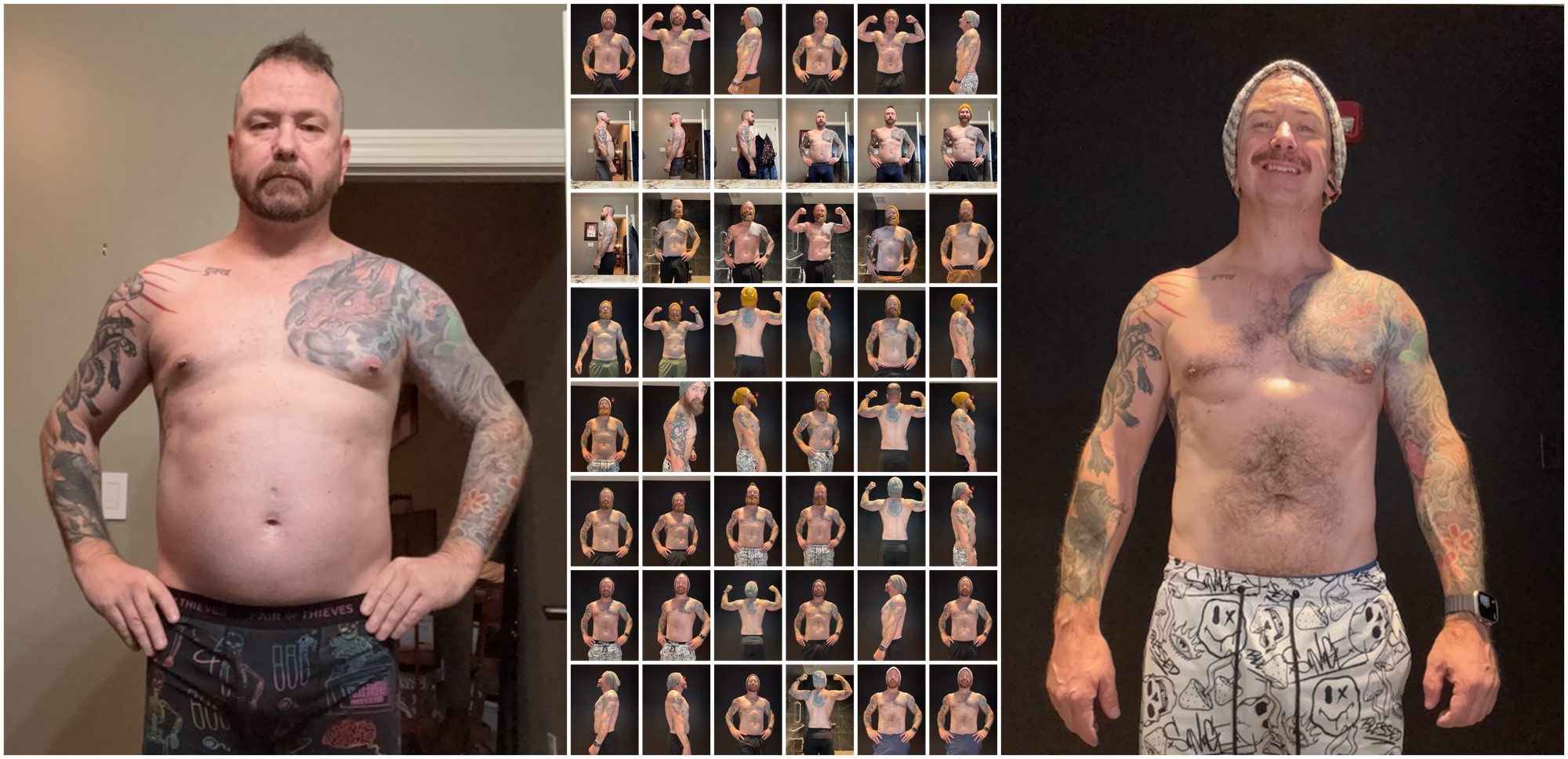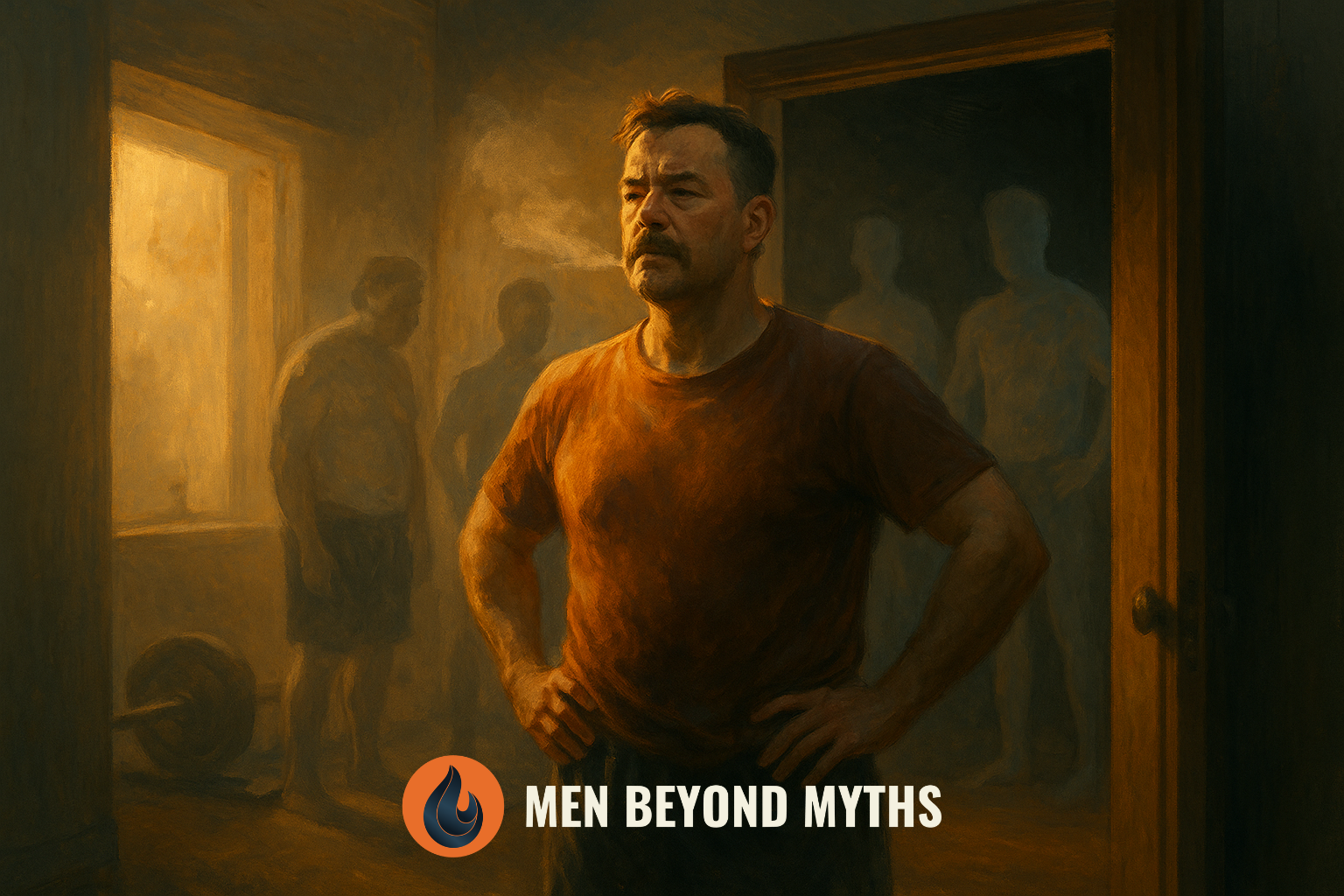A Year of Choosing Priorities: Movember, Men’s Health, and the Truth About Showing Up
Before we begin, let me ask you something
- How many times have you told yourself you don’t have time to take care of your health?
- What if the more honest version is: it’s not my priority?
- And what would it mean if your body eventually forced the issue for you?
Those are the questions I found myself staring down this month—perfect timing for Movember, when a mustache is just a permission slip to be honest about men’s mental health, suicide prevention, prostate cancer, testicular cancer, and early detection of anything we’d rather avoid.
Every November, Movember invites men to pause and tell the truth about how we're really doing. This year, that landed differently for me.
Two weeks from now, I hit one full year of showing up at the gym—the most consistent I’ve been with my physical health in a while. When I noticed that anniversary sneaking up, I had this thought as I was walking in between sets at my gym:
I don’t need to wait two weeks to reflect on this. Movember is literally about not waiting.
Not waiting for the bad news.
Not waiting for a crisis.
Not waiting to “feel ready.”
Movember is about the unglamorous, preventive work that keeps us around longer—for ourselves and for the people we love.
A look in the mirror I couldn’t ignore
When I scrolled back to the very first progress photo—Day One—I remembered exactly how my body felt. Nothing was posed or flattering. I remember pressing the timer on my phone and thinking:
The camera didn’t add ten pounds. I did.
Five years ago, I was in the best shape of my life. Then a couple of surgeries went sideways, and suddenly tying my shoes felt like bending over with a backpack full of bricks. I looked in the mirror and barely recognized myself.
More than just how I looked, it was how I moved. How I felt. How heavy my own skin felt. Fitness doesn’t have to be about a clothing size or a number on the scale; it’s about how your body feels to move through a day.
Movember talks a lot about early detection and paying attention to the subtle signs your body gives you. Mine weren’t subtle at all—I just pretended they were.
Here’s what that actually looked like over the last year:

It’s not a movie makeover. It’s twelve months of the same guy looking a little less puffy, standing a little taller, because he kept showing up.
Why this time had to be different
This wasn’t my first attempt at a transformation. Years ago, I did 75 Hard, and to its credit—it worked. Dramatic change, short time frame.
But here’s the truth about 75 Hard:
It worked for me, but it’s also… well… hard. Two workouts a day, strict rules, no breaks. Great results—just not something you casually maintain unless you’re a Navy SEAL, a superhero, or deeply allergic to sitting still.
I’m none of those things. (But I did used to own a pair of Spider-Man undies)
While the program delivered results, it wasn’t sustainable. When life interrupted, I fell off. Getting back up was harder than I expected. It’s like that in your 40s—and probably even more so in your 50s and 60s.
This time, I knew the approach had to be different: slow, sustainable, repeatable, forgiving.
Movember aligns perfectly with that philosophy—not big heroic gestures, but steady, honest maintenance.
Small, real changes that stacked
- I cut back on eating out. Most of the time I was paying $19.99 for a meal that tasted like someone whispered “flavor” near it. Cooking at home was cheaper, better tasting, better for my body, and it left leftovers for lunch. Wins all around.
- I stopped labeling days as “cheats.” I still have days where I enjoy myself because I’m a human, not a fitness robot. If I want a burger, I’m not betraying the Brotherhood of Healthy Bros—I’m just having lunch.
- I stopped punishing myself for rest. Some weeks my body needed a break. Instead of spiraling, I took the rest and came back. Sustainability bends without breaking.
Slowly, consistently, my body started feeling like mine again.
The story that finally broke through my denial
One of the biggest drivers wasn’t my cholesterol numbers or the way my body felt. It was a story from inside my family.
When I was 39, my Aunt Kady asked my mom to join her at a doctor’s appointment because she’d been having trouble eating. As the doctor examined her, he felt a sizable lump in her abdomen. My aunt shrugged and joked:
“Oh, that? That’s just my monster. I’ve had that forever.”
That “monster” was cancer. Within a year, it took her away from us.
She hid behind humor instead of facing something that terrified her.
She called it her “monster,” and she meant it as a joke. The truth is, a lot of us joke about things that scare us. It’s like whistling as we walk in the dark to distract us from our imaginary fears. Only this isn't imaginary.
That story cracked something open in me. Avoidance is universal—but for men, it’s practically a sport. Movember exists because too many men avoid the doctor until the damage is done. Aunt Kady’s story reminded me I didn’t want to follow that path.
Facing my own medical reality
The last time I talked with my doctor, my cholesterol was climbing. He suggested statins. Let me be clear: I’m not anti-medicine. If my numbers haven’t improved when I go back in, I’ll go on the statin.
But I also wanted to know I had done everything I could behaviorally first:
- consistent movement
- strength training
- better nutrition
- more sleep
- less stress
- genuine rest
Not in opposition to medicine—but in partnership with it.
Whatever my next lab results say, I already feel better. The numbers matter, but so does the daily experience of inhabiting this body.
The data puts it all in perspective
- Heart disease is the #1 killer of men (CDC/NCHS, 2022).
- Meeting physical activity guidelines lowers risk of early death by ~20–30% (CDC, Physical Activity Guidelines).
- Roughly 1 in 5 U.S. male deaths occur before age 65 (CDC/NCHS, 2021 mortality data).
- Early detection changes outcomes—localized prostate cancer survival is >99% vs ~32% when it’s metastatic (American Cancer Society, 2024), yet many men delay care (Cleveland Clinic Men’s Health survey, 2019).
Movember’s entire mission is built on these realities. So is mine.
The truth about time
The biggest lie we tell ourselves is:
I don’t have time.
But the math almost never backs that up.
We say we don’t have time—which is funny because many of us scroll Instagram like it’s a part-time job with terrible benefits.
It’s not about time. It’s about priorities. I finally chose to prioritize being alive, present, and healthy for the people who matter.
My girlfriend has told me more than once how much it means to her that I’m taking my health seriously—that she wants me around for many years to come. I feel the same way about her, my kids, and the people I love. We’ve both watched people we care about drift into what can look like a slow suicide by indifference to their own bodies—skipped checkups, constant stress, numbing instead of resting. I don’t want to rehearse that story. I want to write a different one.
A Movember challenge you can’t outsource
Where can you carve out two hours this week that belong to your health? Not leftovers. Not “when things slow down.” Chosen time. Prioritized time.
Two hours that say:
- I want my future self here.
- I want to stick around.
- I matter.
Movember isn’t about mustaches. It’s about men staying alive and well long after the mustaches come off.
So pick the two hours. Put them on your calendar while you’re still reading this. Then, book the lab you’ve been avoiding or the checkup you keep punting. Text one friend and tell him you did it, or if you want you can message me. Keep each other honest.


